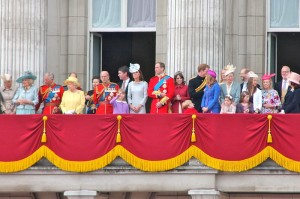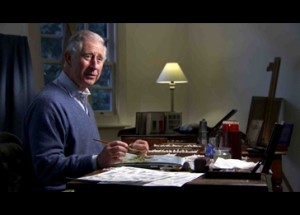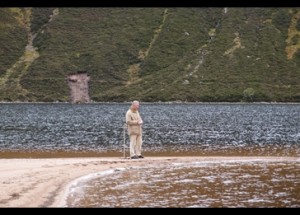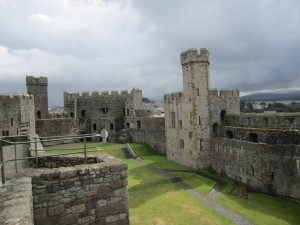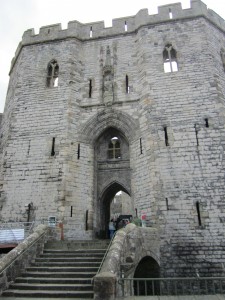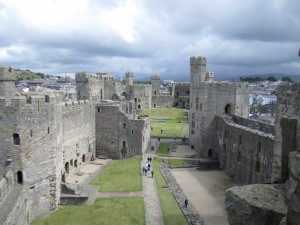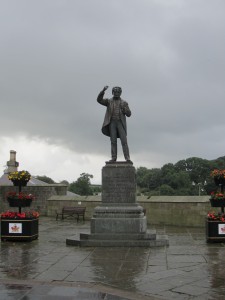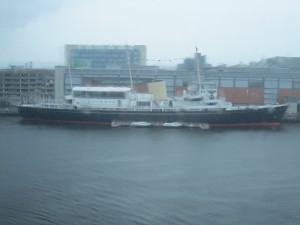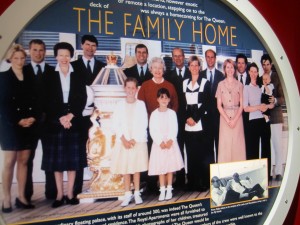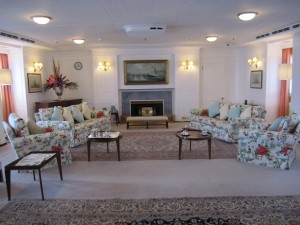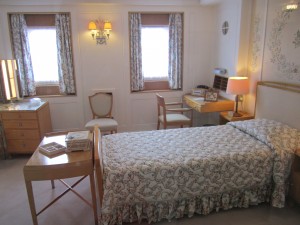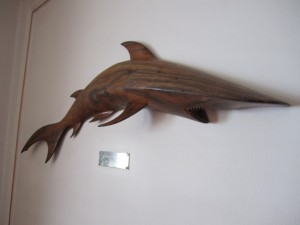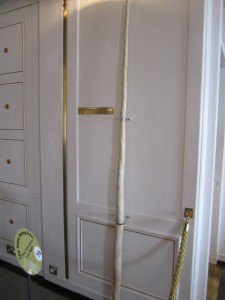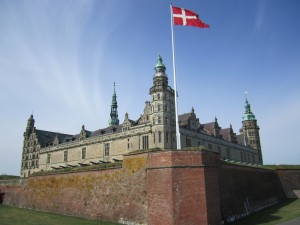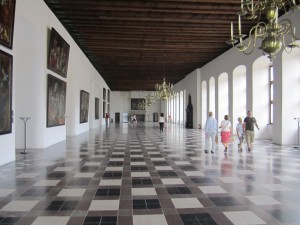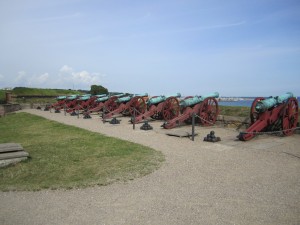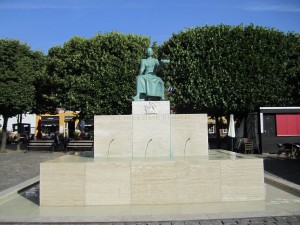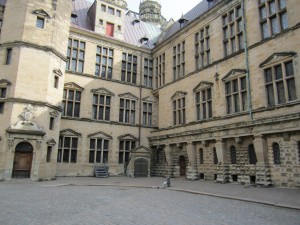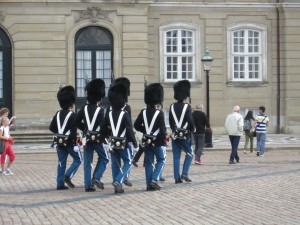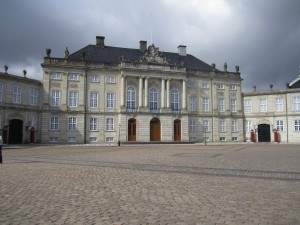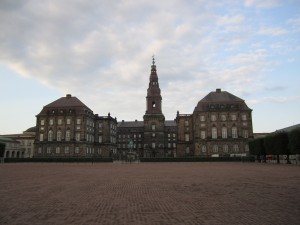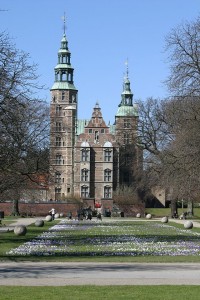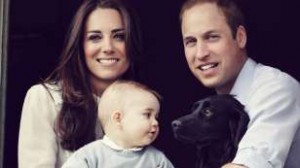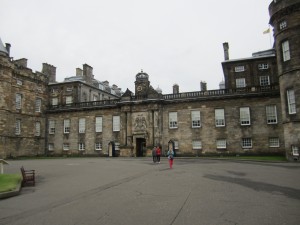
The Palace of Holyroodhouse
The Palace of Holyroodhouse in Edinburgh is Queen Elizabeth II’s official residence in Scotland. Every year, the Queen resides at the Castle for “Royal Week,” hosting garden parties on the Holyroodhouse grounds and inducting new members into the ancient Order of the Thistle. If Scotland votes to secede from the United Kingdom in September, the Queen’s successor may have a separate Scottish coronation at Edinburgh’s St. Giles Cathedral.
The Queen has a close affinity for Scotland. She spent her childhood summers visiting both sets of grandparents there: King George V and Queen Mary at Balmoral and the Earl and Countess of Strathmore at Glamis Castle. Elizabeth II is not the only Queen who has made her mark on the Palace of Holyroodhouse. Here are 5 Scottish and English queens who contributed to the development of the modern palace:
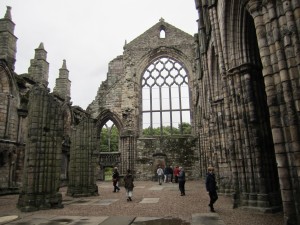
The ruins of Holyrood Abbey
1) St. Margaret (1045-1093) Malcolm III’s queen, Margaret, chose Edinburgh as Scotland’s capital, persuading her husband to move his court there from Dunfermline. Margaret was renowned for her piety and education and transformed the Scottish court into a centre of learning. One of the holy relics in her possession was a fragment of the “holy rood” or true cross. In 1128, Margaret’s son, David I, founded Holyrood Abbey to house the relic.
2) Margaret Tudor (1489-1541) When James IV negotiated his marriage to Henry VII’s elder daughter, Margaret, he decided to transform to royal apartments at Holyrood Abbey into a Renaissance Palace between 1501 and 1505. James IV was well versed in history and spoke multiple languages. The construction of the Palace of Holyroodhouse was intended to impress the King’s English bride and proclaim to the world the Scottish court was the equal of other European royal establishments.
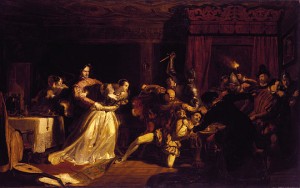
1833 artist’s depiction of the murder of David Rizzio in 1566
3) Mary, Queen of Scots (1542-1587) When Mary, Queen of Scots returned to Scotland from France in 1561 at the age of eighteen, she introduced French style decorations to her apartments in Holyroodhouse. Mary spent her youth in France as the future wife of King Francois II and found Holyroodhouse shabby in comparison to the Louvre and the Chateaux of the Loire Valley. In 1566, a heavily pregnant Mary, Queen of Scots witnessed the murder of her secretary, David Rizzio, in her private apartments at Holyroodhouse by a faction of Scottish nobles led by her second husband, Lord Darnley. After the murder, Mary left Holyroodhouse and gave birth to the future King James VI of Scotland/James I of England at Edinburgh Castle.
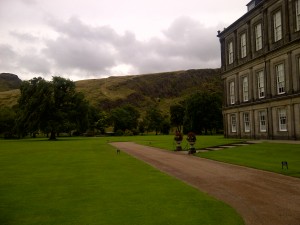
Holyroodhouse Gardens, where the Queen hosts Scottish garden parties today.
4) Catherine of Braganza (1638-1705) Charles II’s Portuguese queen, Catherine of Braganza, never visited the Palace of Holyroodhouse. Following the restoration of the English and Scottish monarchies in 1660, however, Charles II ordered extensive improvements to the palace for himself and his bride including new apartments for the queen. The King appointed architect Sir William Bruce to oversee additions to the palace including the modern quadrangle. Catherine also had a strong cultural impact on Britain – she popularized tea drinking at a time when coffee was the preferred beverage of the aristocracy.
5) Queen Victoria (1819-1901) Queen Victoria discovered Scottish culture through the novels of Sir Walter Scott and developed a strong affinity for Scotland. While her predecessors largely neglected Holyroodhouse, Victoria spent part of her year in Scotland, attending official engagements in Edinburgh and holidaying at her private residence, Balmoral. While in Scotland, Victoria immersed herself in Scottish culture, dressing her children in tartans, listening to readings of Robert Burns poems and even assuming a Scottish accent. The relationship between the monarchy and Scotland has remained close since Victoria’s reign.
Further Reading on the Palace of Holyroodhouse, Scotland’s Palaces and Scottish Monarchs
History:
 Elizabeth Patricia Dennison, Holyrood and Canongate: A Thousand Years of History
Elizabeth Patricia Dennison, Holyrood and Canongate: A Thousand Years of History
 John Dunbar, Scottish Royal Palaces: The Architecture of the Royal Residences During the Late Medieval and Early Renaissance Periods
John Dunbar, Scottish Royal Palaces: The Architecture of the Royal Residences During the Late Medieval and Early Renaissance Periods
 John Guy, Queen of Scots: Queen of Scots: The True Life of Mary Stuart
John Guy, Queen of Scots: Queen of Scots: The True Life of Mary Stuart
Historical Fiction:
 Sir Walter Scott, Waverley
Sir Walter Scott, Waverley
 Nigel Tranter, Robert the Bruce Trilogy
Nigel Tranter, Robert the Bruce Trilogy
 Jean Plaidy, The Thistle And The Rose
Jean Plaidy, The Thistle And The Rose
 ReayTannahil, Fatal Majesty: A Novel of Mary Queen of Scots
ReayTannahil, Fatal Majesty: A Novel of Mary Queen of Scots
Next: The Investiture of Prince Charles at Caernarfon Castle in Wales
